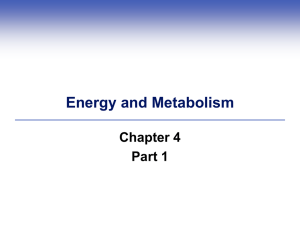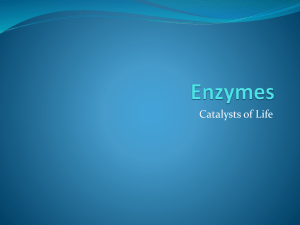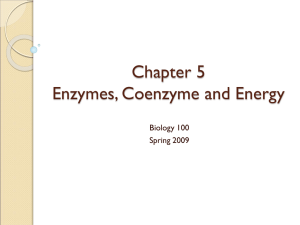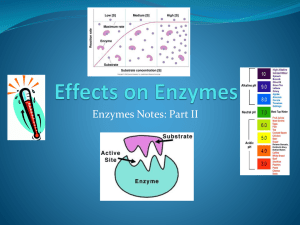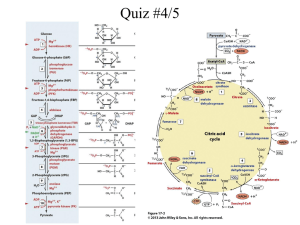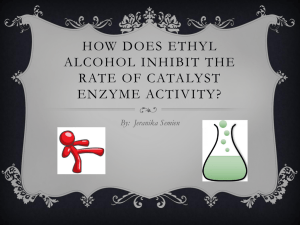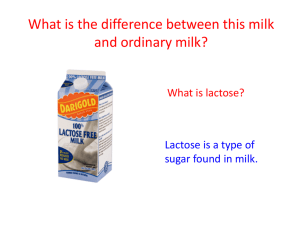Enzymes - terranovasciences
advertisement
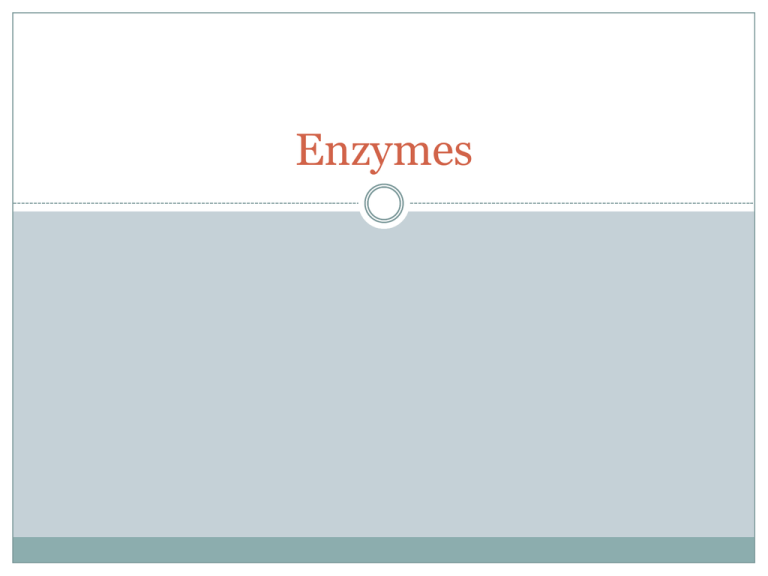
Enzymes Enzymes, substrates and active sites Enzymes are globular proteins that work as catalysts Substrates are the substances that enzymes convert into products during metabolic reactions. Active site is the region on the surface of an enzyme to which substrates bind and which catalyzes the reaction. http://www.regentsprep.org/regents/biology/units/homeostasis/processes.cfm Enzyme – substrate complex Once a substrate has been locked into the active site, the reaction is catalyzed The products are released and the enzyme is used again. Animation: How Enzymes Work Enzymes are specific to their substrates Enzymes are highly specific and work only on specific substrates (enzyme substrate specificity) Two theories explain the substrate specificity of enzymes: Lock and key model Induced fit model Making and testing theoretical models The German scientist Emil Fisher introduced the lock and key model in 1890. Daniel Koshland suggested the induced-fit model in 1959 in the US. The conformational changes predicted by Koshland’s model were subsequently observed using high-resolution X-rays analysis of enzymes and other newly developed techniques. Although much experimental evidence has accumulated confirming predictions based on the induced-fit model, it is still just viewed as a model of enzyme activity. Why has the lock and key model been superseded by the induced-fit model? Could there ever be a situation in which two models are both retained? Why is the induced-fit model not now called the Law of Induced Fit? Enzymes lower the activation energy of a reaction (HL) Activation energy is the amount of energy that must be put into a reaction to make it occur. An enzyme stresses the bonds in the substrate(s), reducing the activation energy required for the reaction to occur. http://njms2.umdnj.edu/biochweb/education/bioweb/PreK201 0/EnzymeProperties.html http://home.pacbell.net/lpoli/page0001.htm Enzymes are globular proteins with a tridimentional structure Their structure can be altered by several factors When the shape of their active site is changed considerabily they will not function. Denaturation is changing the structure of a protein (enzyme) so that it can not carry out its function. http://qwickstep.com/search/ denaturation-of-protein.html Factors Affecting Enzyme Activity Effect of pH on enzyme activity •Enzymes only operate in a narrow range of pH values. The optimum pH •If there is a deviation from the optimum pH, hydrogen bonds in amino acids are broken an the enzyme is denatured. http://www.dentistry.leeds.ac.uk/biochem/lecture/en zymes/index.html •Different enzymes have different optimum pH and work in different pH environments. Factors affecting enzyme activity Effect of temperature on enzyme activity •As temperature increases the rate of reaction increases. The particles have more kinetic energy, therefore collide and react more often. •Above the optimal temperature denaturation of the enzymes occur, the active site changes and looses its function. •A thermophile, such as bacteria in deep sea vents, is an organism that is able to withstand higher temperatures before enzymes denature. http://staff.jccc.net/pdecell/metabolism/enzy mes/enzymes.html Factors Affecting Enzyme Activity Substrate concentrations Increasing the substrate concentration increases the rate of reaction. At the optimum concentration of substrate molecules, all the active sites are full and working at a maximum efficiency Any increase in concentration beyond the optimum will have no added effect as there is no extra active sites to be used. http://leavingbio.net/ENZYMES.htm Lactose Intolerance Lactose, the sugar found in milk causes allergies in some people because they are unable to produce enough of the enzyme lactase. lactose - lactase-- glucose + galactose Global estimates of lactose intolerance How can we cope with lactose intolerance Take a lactase supplement 1. Produced industrially using the Aspergillus niger fungus Drink lactose free milk 2. 1. 2. http://curiosidadmedica11.blogspot. Milk is treated with lactase (produced by A. niger) and pre-digested before being com/ packaged. Lactase can be either added directly to milk or be inmmobilized on a surface or beads of a porous material. http://lactoseintoleranceforum.com/lactase-enzymebiology_lactase-enzyme-biology-lactose-intolerancebegins-here_29.html Metabolic Pathways (HL) Chains or cycles of enzyme catalyzed reactions The Krebs cycle (cell respiration) and the Calvin cycle (photosynthesis) are examples of metabolic pathways that form cycles http://cuzwearefriends.blogspot.com/2010 _05_01_archive.html http://www.starsandseas.com/SAS%20Cells/SAS%20c ellphysiol/SAS%20photosyn/cellcalvin.htm Metabolic Pathways (HL) Protein synthesis is a metabolic pathway that occurs in a chain. http://www.cssforum.com.pk/css-compulsorysubjects/everyday-science/everyday-science-notes/11865glossary-biology-2.html Enzyme Inhibition(HL) Enzymes can be inhibited by other molecules. The process can be: Competitive http://www.biologypictures.net/competitive-inhibition-enzym/ Non – competitive Allosteric interactions Allosteric site http://www.emc.maricopa.edu/faculty/farabee/biobk/biobookenzym. html End – product inhibition of metabolic pathways (HL) Metabolic pathways can be switched off completely in cells where there is an excess of product. The end product inhibition prevents a build up of intermediate products. http://www.occc.edu/biologylabs/Documents/Homeos tasis/End_Product_Inhibition.htm Feedback Inhibiton of Metabolic Pathways

